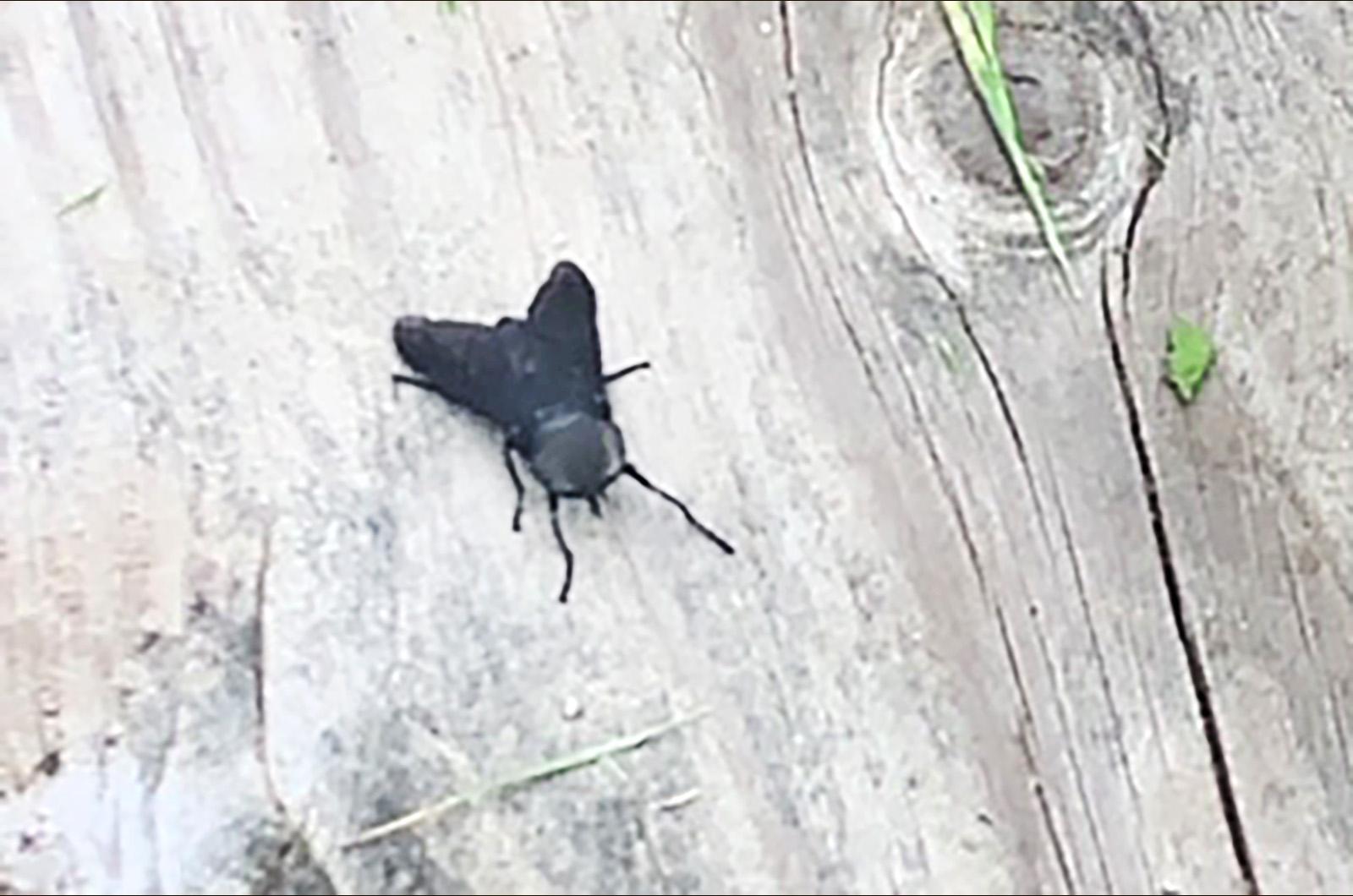It is a story of two flies and two siblings.
For my brother, there was a fly in the ointment. The little houseflies that flutter about his porch drive him crazy, so he bats them with an electrified fly swatter. My fly is big and bold and inspires a different emotion and action. Wonder, awe and interest is his naturalist sister’s response, and I captured mine in my camera rather than created a corpse.
Different strokes for different folks.
The fly of my eye is the black horsefly, a giant dark and dashing beast that flew into my life and onto my deck last week. I was surprised at its size, which was more than an inch, and its very black body. This beast was ten times the size of my brother’s patio pals.
There are reasons that my brother’s brutal behavior might resonate with some. Flies can bite humans and animals and can carry disease. The black horsefly is able to transmit anthrax, worms and other parasites.
Even a small bite is to be avoided. While black horseflies prefer animals to humans, their bite is worse that their buzz. Scissor-like mouth parts abrade the skin and the blood that oozes out pools, and is sucked up by the fly’s slurping mouth parts.
An animal that consumes blood is called a sanguivore. Sanguivores can practice telmophagy, lacerating and feeding on pooled blood, or can be solenophagous, piercing and sucking like a mosquito.
In the case of the telmophagous black horsefly, it is only the female that laps blood. Non-biting males lack those cutting mouth parts and prefer to dine on nectar whilst waiting around to mate with its blood-slurping partner.
The fly I spied was not interested in biting me, leading me to believe it was a male. Confirmation came from an examination of its eyes. This insect’s very large eyes take up much of its head. The females are dichoptic, meaning the two eyes are separate with an easily-observed space between them. Males lack that separation, making them holoptic with their wraparound peepers.
It was fortunate that I observed only one fly: they will quickly multiply. Fecundity is a fly’s super power. Black horsefly females can lay three to four masses of up to 1,000 eggs each. So, in a good season, more than 4,000 eggs might be produced and turn into the same number of larvae. The larvae, also called maggots, pupate and then become adults to start the cycle all over again.
The ability to have many reproductive cycles over a lifetime makes flies iteroparous, while one-hit wonder reproducers are considered semelparous.
With all of the potential negatives and their reputation for illness and evil, you may be thinking that my brother was on the right track with his electronic zapper. No matter where you stand — and with what weapon in your hand — we need flies and other insects to feed birds and fish, and to serve as the base of the food web.
My brother wasn’t convinced, even if I was right. (Ah, sibling rivalry.) This tale of family squabble ultimately came down to a variance of values: my live-and-let-live philosophy versus his survival-of-the-fittest finality.
Suzan Bellincampi is Islands director for Felix Neck Wildlife Sanctuary in Edgartown and the Nantucket Wildlife Sanctuaries. She is also the author of Martha’s Vineyard: A Field Guide to Island Nature and The Nature of Martha’s Vineyard.




Comments
Comment policy »